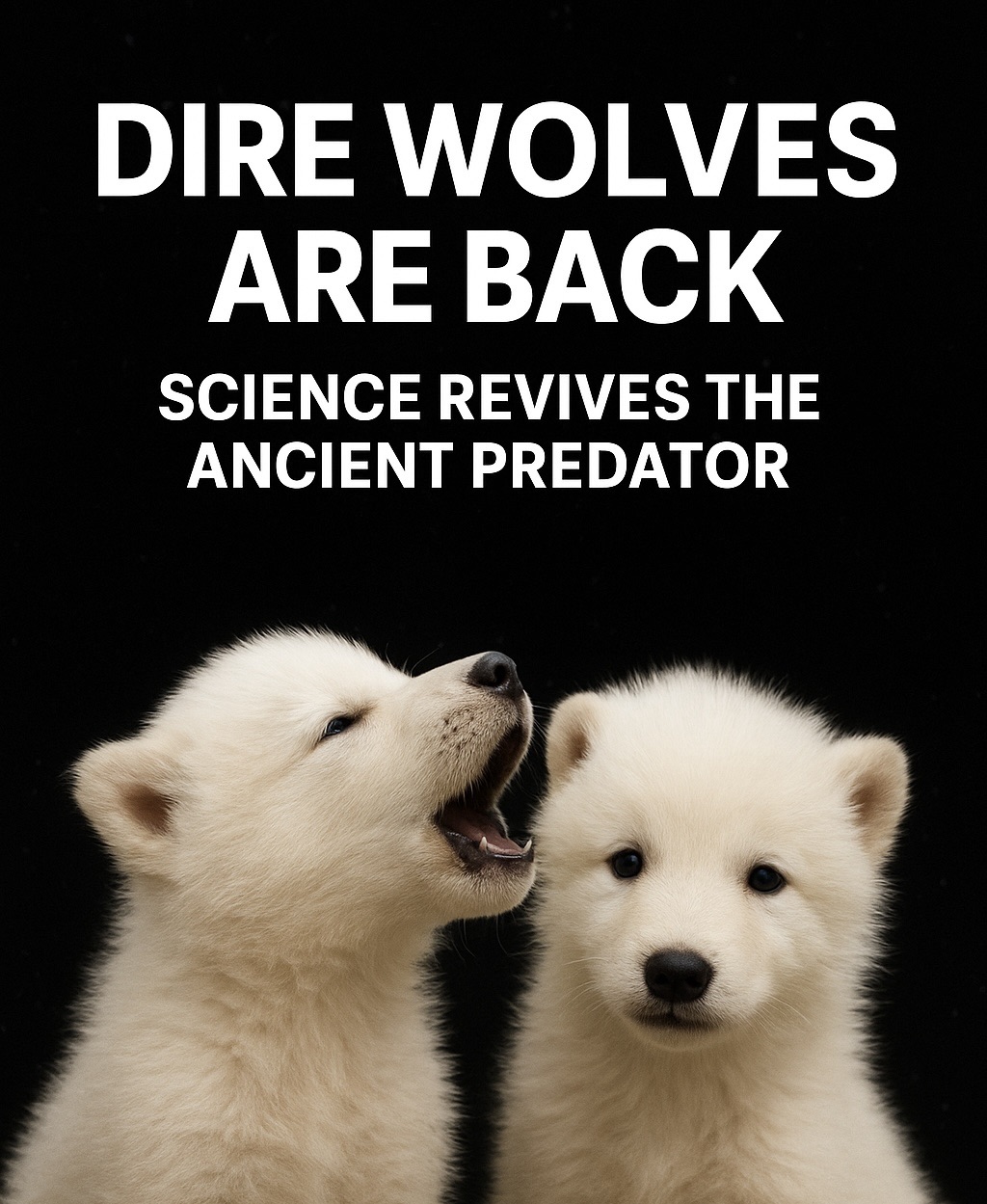In a revelation that sounds straight out of science fiction, Colossal Biosciences has successfully brought back the dire wolf—a species believed to have gone extinct more than 10,000 years ago. Once only alive in fossil records and fantasy tales, the dire wolf has now howled again, shaking both the scientific community and the general public.

The dire wolf wasn’t just another ancient canine. Known for its massive build and bone-crushing jaws, it was one of the apex predators of the Ice Age. Unlike its smaller gray wolf cousins, dire wolves hunted in packs and could take down enormous prey. The fact that their howl is echoing once more raises goosebumps—this is history roaring back to life.
But here’s the big question: is this a triumph of science or the start of a problem for mankind?
The Promise and the Peril
On one hand, reviving extinct species offers hope for repairing ecosystems we humans damaged. Imagine restoring balance to nature by reintroducing species that once played crucial roles. On the other hand, predators like dire wolves raise very real concerns. Where will they live? What will they eat? And what happens if they adapt too well in a modern world that isn’t prepared for them?
It’s thrilling, but it also feels like playing with fire. The same animals that vanished for a reason could one day compete with humans for resources—or worse, remind us why nature let them go extinct in the first place.
What’s Next in De-Extinction?
Colossal isn’t stopping at dire wolves. The company is working on reviving other extinct species, including:
Woolly Mammoth – towering Ice Age giants, re-engineered to help slow climate change by restoring frozen grasslands. Dodo Bird – the symbol of extinction itself, now set for a second chance on isolated islands. Tasmanian Tiger (Thylacine) – a marsupial predator wiped out less than a century ago, now being given new life.
Each project feels like a mix of wonder and warning. Bringing these creatures back could reshape ecosystems—or rewrite history in ways we can’t predict.
What This Means for Mankind
The return of the dire wolf is more than just a scientific experiment—it’s a test of how far we’re willing to push the boundaries of nature. Humanity now holds the power to reverse extinction, but with that power comes the responsibility to ask: should we bring everything back, simply because we can?
We stand at a crossroads where curiosity collides with caution. If handled wisely, de-extinction could help heal the Earth. If mismanaged, it could unleash challenges we’re not ready for.
👉 The dire wolf’s howl is not just a sound from the past—it’s a question for the future. Are we prepared to live in a world where our ancestors’ predators roam again?




Pingback: How Artificial Intelligence is Quietly Changing Your Everyday Routine in 2025 - baeolah